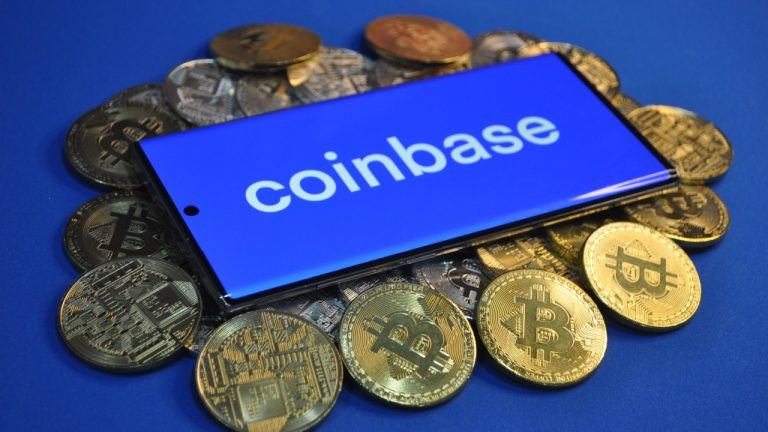
Exploring the Rise and Impact of Restaking
HodlX Guest Post Submit Your Post
In 2024, the restaking sector evolved from an emerging concept to a significant reality of the DeFi (decentralized finance) ecosystem.
The success of restaking is closely tied to the limitations of layer-one blockchains, which can only guarantee the validation of information held within the chain.
While developers could easily leverage each layer-one trust network to secure DApps (decentralized applications), whose operations performed solely inside the chain, distributed systems such as bridges, sequencers and data availability layers have not enjoyed the same level of security.
For such DApps, developers had to establish their own trust networks to secure these systems, making the process more complex and resource-intensive.
Restaking seeks to address a major issue the fragmented blockchain security hus, extending each layer-one trust network to all services operating with off-chain information.
The rise of liquid restaking protocols
The introduction of restaking protocols has been met with significant enthusiasm, since it addressed a key limitation in current blockchain infrastructures while also creating a secondary layer of reward opportunities for its users.
Restaking protocols have quickly gained traction, with restaking infrastructures now boasting over $13 billion in TVL (total value locked).
However, much like the early days of Ethereum 2.0, staking and restaking require users to lock up their assets, leading to capital inefficiency an issue many users are reluctant to face.
To overcome this, liquid staking protocols emerged on Ethereum, and similarly, liquid restaking protocols have now risen to support the restaking ecosystem.
These liquid restaking protocols have been warmly received by the community, now encompassing more than 80% of the total restaked value.
By leveraging the restaking infrastructures, these protocols allow users to unlock additional liquidity from their restaked assets.
Liquid restaking protocols introduce LRTs (liquid restaking tokens) derivatives representing restaked positions. When users restake their tokens through these protocols, they receive LRTs in return.
These can be freely exchanged or utilized in other DeFi applications, effectively releasing liquidity that was previously locked up.
At first glance, the creation of LRTs appears to be a straightforward process.
However, it’s important to recognize that restaking introduces a second layer of leverage on top of staked assets therefore, it has an extra layer of complexity.
Unlike staking, which involves a single underlying asset like ETH restaking accommodates a wide range of underlying assets, which makes the process of creating an LRT harder than just creating an LST.
Native restaking and LST restaking
Native restaking
Native Restaking is the process of restaking natively staked ETH.
Initially, native restaking was considered the most complex method for participating in the ecosystem since it required users to connect their staking private keys to a restaking infrastructure.
However, the advent of liquid restaking protocols introduced more user-friendly solutions, quickly making this the most attractive option on the market.
Through LRTs, users are able to directly deposit their native ETH and with it validate both Ethereum and the restaking infrastructure.
The primary advantage of native liquid restaking lies in its convenience. It consolidates both native and restaking rewards into a single asset, simplifying management and maximizing returns for users.
LST restaking
Restaking LSTs involves the repurpose of LSTs.
Considering that liquid staking tokens are almost 50% of the total staked assets, this solution aims to cater to the wider audience, allowing all types of stakers to participate in the restaking ecosystem.
To opt into this solution, a user must first stake their ETH with an LST provider and then deposit the resulting LST either directly into the restaking infrastructure protocol or through an LRT protocol.
The two classes of liquid restaking
In the previous section, we examined the two types of assets that users can restake. Now, let’s shift our focus to the solutions provided by liquid restaking protocols and explore how LRTs are created.
Liquid restaking protocols significantly enhance the composability of users’ assets, but they also add a layer of complexity due to the wide variety of assets available for restaking.
As a result, there are two primary methods for creating LRTs asket-based LRT) and iLRTs (isolated LRTs).
Let’s explore each of these solutions in detail.
One of the most used strategies to create an LRT is to pool all the type of assets into a basket and provide a single LRT solution.
This means that the bLRT will encompass all the restaked ETH and ETH LSTs included on the protocol.
While this strategy simplifies diversification, it introduces several complexities and risks.
- Performance risks Since the different LSTs are pooled, poor performance of one asset can have an impact on the whole basket.
- – Management complexity Balancing the weights of various LSTs inside a basket requires ongoing monitoring and adjustment.
- – Increased risk exposure Restakers are exposed to the combined risk of all LSTs in the basket, which may increase return volatility.
ILRTs
Isolated liquid restaking provides a better alternative by ensuring that each restaked asset is represented by a separate iLRT.
This approach addresses the drawbacks of basket-based solutions and delivers several significant benefits.
- Transparency Each asset and its returns are tracked separately, giving restakers full visibility.
- Minimized risks Isolating each restakers risk reduces the impact of poor performance on other assets, improving overall investment stability.
- Control over investments Investors can make informed decisions based on the performance of each individual asset, allowing for more personalized investment strategies and optimized returns.
Conclusions
The two solutions mentioned above present distinct challenges.
A bLRT carries a riskier investment profile but offers easier integration with DeFi protocols since only one token needs to be incorporated across different platforms.
This streamlined integration can lead to better market adoption for these tokens. However, it also introduces the risk of a negative cascading effect if one of the underlying tokens significantly underperforms.
On the other hand, iLRTs have a less risky profile but face greater challenges in expanding quickly into DeFi integrations.
While it is certainly possible to integrate iLRTs, the process is slower, especially in the early stages when the products are still establishing themselves in the market.
Unstaking solutions
Another key difficulty in the restaking ecosystem is the lack of effective unstaking solutions.
Taking this into account, some prominent restaking protocols still lack this feature therefore, users cannot quickly access their restaked assets.
Moreover, for protocols that do support unstaking, oftentimes there is a mandatory unbounding period which can vary between seven to 21 days.
This extended lock-up period can create a negative cascading effect in periods where users want to quickly exit their positions.
In such cases, the only option they have is to go to the DeFi integrations and swap back their tokens, exposing them to slippages and possible tokens depegs.
Therefore, a flash unstaking feature is essential to address these liquidity constraints.
Such a feature would allow users to gain immediate access to their restaked assets, eliminating the need for a seven-day unbounding period.
This approach would offer several benefits, such as the following.
- Immediate liquidity Users can easily convert their restaked position back into their original forms, allowing them to access their funds when needed.
- Increased flexibility With instantaneous unstaking, users can better manage their portfolios and take advantage of new DeFi possibilities that arise.
- Improved user experience Providing quick access to restaked assets boost trust and confidence in a protocol, resulting in more participation and adoption.
Closing thoughts
Restaking has become one of the fastest-growing DeFi sub-sectors in 2024, with the potential to alter the public blockchain infrastructure. However, with rapid innovation comes inherent risks.
The success of restaking and the rise of liquid restaking protocols demonstrate strong demand and interest, suggesting that a significant market shift is imminent.
However, since restaking is still in its early stages, unforeseen challenges and potential setbacks may arise.
It’s my opinion that these inherent constraints can be highly mitigated through isolated liquid restaking and immediate unstaking features, which will create an even more robust, versatile and user-friendly restaking industry, driving greater adoption to this rapidly emerging market.
As the space continues to mature, it will be interesting to see which protocols and solutions take the lead as the restaking industry develops.
Following industry best practices and addressing user experience will be vital in defining industry leaders.
While protocols with the highest TVL might initially appear dominant, those that prioritize remarkable features and industry best-practices will inevitably dominate the restaking landscape.
João Simões is a fintech and fund management expert with over nine years of experience. He is the CEO and co-founder of InceptionLRT, a DeFi business developer at Tagus Labs, and a member of Staking Circle. João founded BitMasters, Portugal’s first Bitcoin mining firm. He holds degrees from the London School of Economics and UC Berkeley and won an award for his master’s thesis on cryptocurrencies.
Follow Us on Twitter Facebook Telegram

Disclaimer: Opinions expressed at The Daily Hodl are not investment advice. Investors should do their due diligence before making any high-risk investments in Bitcoin, cryptocurrency or digital assets. Please be advised that your transfers and trades are at your own risk, and any loses you may incur are your responsibility. The Daily Hodl does not recommend the buying or selling of any cryptocurrencies or digital assets, nor is The Daily Hodl an investment advisor. Please note that The Daily Hodl participates in affiliate marketing.
Featured Image: Shutterstock/andrey_l
The post Exploring the Rise and Impact of Restaking appeared first on The Daily Hodl.
Go to Source
Author: João Simões









